Wild Women Jostle Buffalo Bill as Paris Exhibit Explores Freak Show Craze
 A poster for "Coming Soon at the Circus Robinson: Wild Peoples -- The Greatest Show of the Century." The undated poster is on view at the Musee du Quai Branly through June 3, 2012. Source: Musee du Quai Branly via Bloomberg
A poster for "Coming Soon at the Circus Robinson: Wild Peoples -- The Greatest Show of the Century." The undated poster is on view at the Musee du Quai Branly through June 3, 2012. Source: Musee du Quai Branly via Bloombergfrom: bloomberg.com
By Jorg von Uthmann
Dec 6, 2011
A soccer star organizing a museum exhibition, now that doesn’t happen every day.
Yet that’s just what’s happening at the Musee du Quai Branly in Paris: Lilian Thuram, who was a member of France’s national soccer team from 1996 to 2008, is one of the three curators of a new show, “The Invention of the Savage.”
There’s a reason for Thuram’s involvement: He was born in the overseas department of Guadeloupe, he’s black and active in anti-discrimination politics.
The 500 or so items on display -- paintings, posters, photographs, films, costumes, masks and dioramas -- illustrate how, during many centuries, men, women and children from Africa, Asia and the Americas were exhibited in the Western world like exotic animals in a zoo.
The thesis of the show is simple: The savage was invented by the West as a byproduct of colonization.
Yet that’s just what’s happening at the Musee du Quai Branly in Paris: Lilian Thuram, who was a member of France’s national soccer team from 1996 to 2008, is one of the three curators of a new show, “The Invention of the Savage.”
There’s a reason for Thuram’s involvement: He was born in the overseas department of Guadeloupe, he’s black and active in anti-discrimination politics.
The 500 or so items on display -- paintings, posters, photographs, films, costumes, masks and dioramas -- illustrate how, during many centuries, men, women and children from Africa, Asia and the Americas were exhibited in the Western world like exotic animals in a zoo.
The thesis of the show is simple: The savage was invented by the West as a byproduct of colonization.
 Musee du Quai Branly via BloombergGuillermo Antonio Farni with his Earthmen in the Royal Aquarium, London, in 1884. The photograph is on view at the Musee du Quai Branly through June 3, 2012..
Musee du Quai Branly via BloombergGuillermo Antonio Farni with his Earthmen in the Royal Aquarium, London, in 1884. The photograph is on view at the Musee du Quai Branly through June 3, 2012..The first section (of four) describes how the tradition started in the 16th century: European princes vied to amass the most original collection of curiosities, including dwarves and giants, Moors and Indians.
Here you find Omai, a Tahitian who arrived in London in 1774 and created a sensation when he was presented at court. Joshua Reynolds was intrigued enough to paint him.
From there we move to fairgrounds and amusement parks after the aristocratic passion morphed into a plebeian craze.
 Musee du Quai Branly via Bloomberg
Musee du Quai Branly via Bloomberg
A poster for the "Colonial" show in Stuttgart, Germany (1928), on view at the Musee du Quai Branly through JUNE 3, 2012.
Missing Link
London became the capital of freak shows where crowds lined up to have a glimpse at the oversized buttocks of Saartje Baartman, the “Hottentot Venus,” or at Krao, the hairy girl from Laos advertised as “Darwin’s missing link” between human and ape.
In the 19th century, P.T. Barnum became the first show- business millionaire.
His “American Museum” featured Pygmies, Aborigines, the Siamese twins Chang and Eng, Mexicans presented as “The Last Aztecs” and wild animals, some wilder than others.
William (“Buffalo Bill”) Cody’s “Wild West” shows, which ignored the massacres perpetrated during the Indian wars, attracted huge crowds on both sides of the Atlantic. READ MORE AT:http://www.bloomberg.com/news/2011-12-07/wild-women-jostle-buffalo-bill-as-paris-exhibit-explores-freak-show-craze.html
Here you find Omai, a Tahitian who arrived in London in 1774 and created a sensation when he was presented at court. Joshua Reynolds was intrigued enough to paint him.
From there we move to fairgrounds and amusement parks after the aristocratic passion morphed into a plebeian craze.
 Musee du Quai Branly via Bloomberg
Musee du Quai Branly via BloombergA poster for the "Colonial" show in Stuttgart, Germany (1928), on view at the Musee du Quai Branly through JUNE 3, 2012.
Missing Link
London became the capital of freak shows where crowds lined up to have a glimpse at the oversized buttocks of Saartje Baartman, the “Hottentot Venus,” or at Krao, the hairy girl from Laos advertised as “Darwin’s missing link” between human and ape.
In the 19th century, P.T. Barnum became the first show- business millionaire.
His “American Museum” featured Pygmies, Aborigines, the Siamese twins Chang and Eng, Mexicans presented as “The Last Aztecs” and wild animals, some wilder than others.
William (“Buffalo Bill”) Cody’s “Wild West” shows, which ignored the massacres perpetrated during the Indian wars, attracted huge crowds on both sides of the Atlantic. READ MORE AT:http://www.bloomberg.com/news/2011-12-07/wild-women-jostle-buffalo-bill-as-paris-exhibit-explores-freak-show-craze.html



























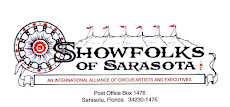
















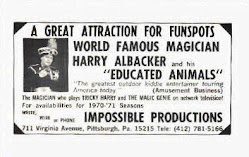

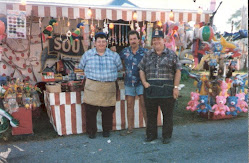




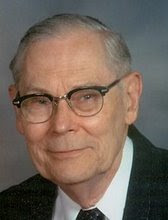








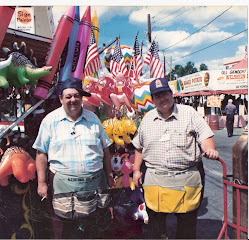
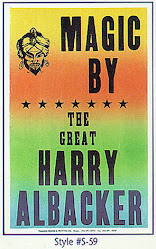

























No comments:
Post a Comment